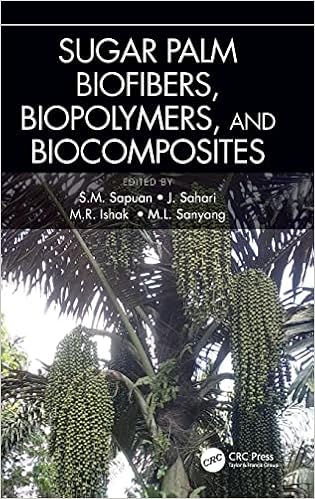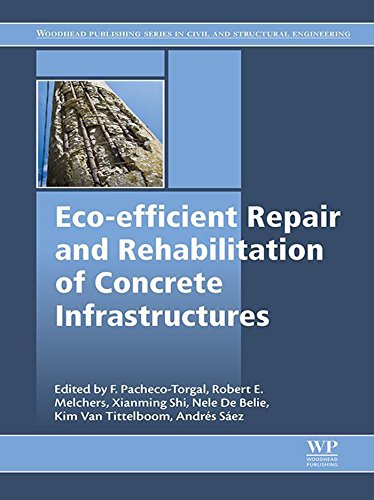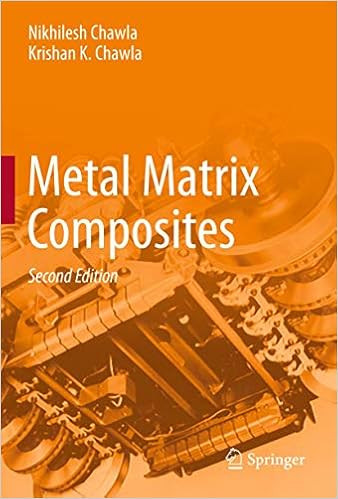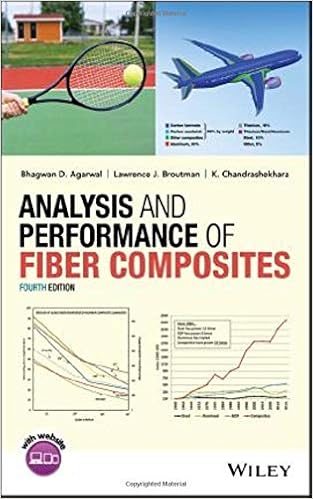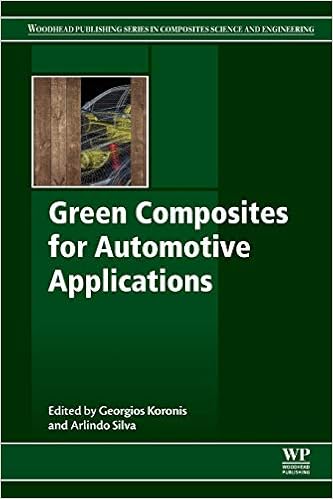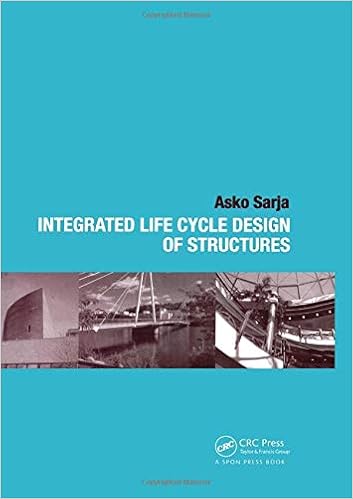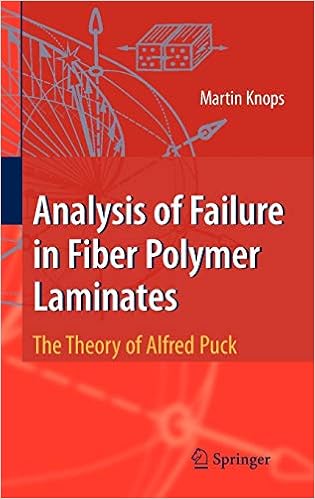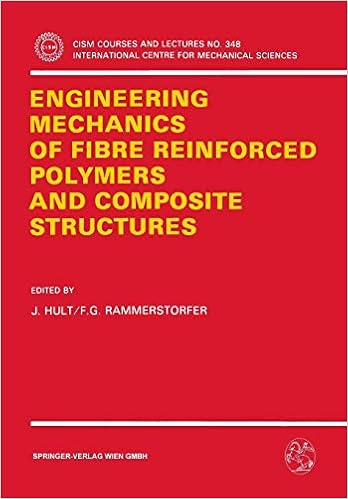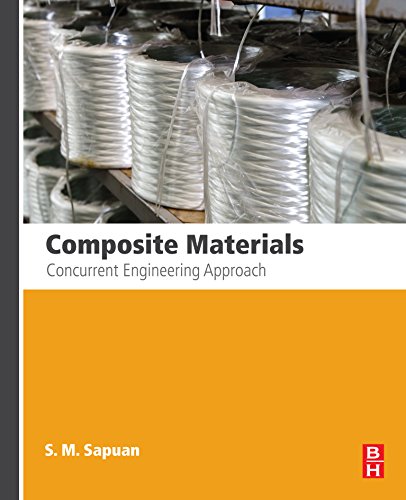Buy Online Fibre Composite Reinforced Products Products from IndianConstructionIndustry.Com in Association with Amazon India
Home » Fibre Composite Reinforced Products
Fibre Composite Reinforced Products Products
Price:  17093
17093
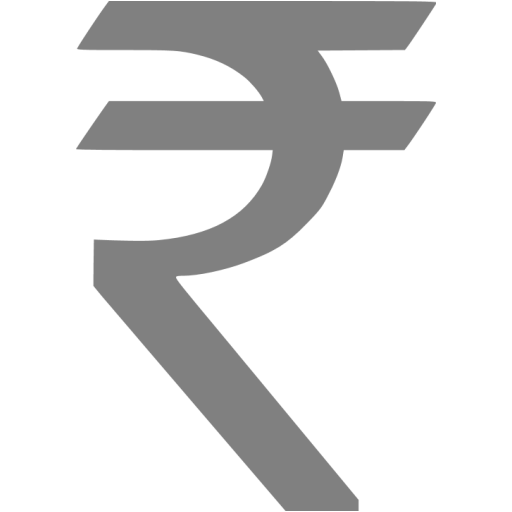 17181
17181
 17093
17093
 17181
17181
You Save: 88
Price:  12705
12705
 0
0
 12705
12705
 0
0
You Save: 0
Price:  21367
21367
 24544
24544
 21367
21367
 24544
24544
You Save: 3177
Sugar Palm Biofibers, Biopolymers, and Biocomposites - Product Features
- Natural fibre composites are increasingly being viewed as viable and environmentally responsible alternatives to synthetic fibre composites and plastics. Sugar Palm Biofibers, Biopolymers, and Biocomposites considers the use of sugar palm fibres for materials development and application. It offers original research on the properties and behavior of sugar palm?s fibres, polymers, and biocomposites, covering mechanical, physical, thermal, chemical, environmental, morphological properties, as well as optimal design. It discusses sugar palm fibre thermosetting composites, sugar palm fibre thermoplastic composites, impregnation of sugar palm fibre, various lengths of sugar palm fibres, forms and arrangements such as particulate, continuous roving, and woven fabrics. The book also discusses innovations in commercialized products derived from sugar palm.
Eco-efficient Repair and Rehabilitation of Concrete Infrastructures (Woodhead Publishing Series in Civil and Structural Engineering) - Product Features
- Eco-efficient Repair and Rehabilitation of Concrete Infrastructures provides an updated state-of-the-art review on eco-efficient repair and rehabilitation of concrete infrastructure. The first section focuses on deterioration assessment methods, and includes chapters on stress wave assessment, ground-penetrating radar, monitoring of corrosion, SHM using acoustic emission and optical fiber sensors. Other sections discuss the development and application of several new innovative repair and rehabilitation materials, including geopolymer concrete, sulfoaluminate cement-based concrete, engineered cementitious composites (ECC) based concrete, bacteria-based concrete, concrete with encapsulated polyurethane, and concrete with super absorbent polymer (SAPs), amongst other topics.
- Final sections focus on crucial design aspects, such as quality control, including lifecycle and cost analysis with several related case studies on repair and rehabilitation. The book will be an essential reference resource for materials scientists, civil and structural engineers, architects, structural designers and contractors working in the construction industry.
Injection Molding: Integration of Theory and Modeling Methods - Product Features
- This book covers fundamental principles and numerical methods relevant to the modeling of the injection molding process. As injection molding processing is related to rheology, mechanical and chemical engineering, polymer science and computational methods, and is a rapidly growing field, the book provides a multidisciplinary and comprehensive introduction to the subjects required for an understanding of the complex process. It addresses the up-to-date status of fundamental understanding and simulation technologies, without losing sight of still useful classical approaches. The main chapters of the book are devoted to the currently active fields of flow-induced crystallization and orientation evolution of fiber suspensions, respectively, followed by detailed discussion of their effects on mechanical property, shrinkage and warpage of injection-molded products. The level of the proposed book will be suitable for interested scientists, R&D engineers, application engineers, and graduate students in engineering.
Textiles for Industrial Applications - Product Features
- An evolution is currently underway in the textile industry and Textile for Industrial Applications is the guidebook for its growth. This industry can be classified into three categories?clothing, home textile, and industrial textile. Industrial textiles, also known as technical textiles, are a part of the industry that is thriving and showing great promise. Unlike conventional textiles traditionally used for clothing or furnishing by consumers, industrial textiles are used for manufacturing and functionality purposes, and generally by other industries. This book provides an encyclopedic review of industrial textiles, covering all of the latest trends in the development and application of these textiles with advice and suggestions on how to apply them in other industries. Discusses the latest technologies adopted in the industrial textile industry including nano finishing and plasma applications Covers the basic fundamentals about product characteristics and production techniques Caters to students and faculty involved in textile technology, composite technology, and other interdisciplinary courses as it relates to product engineering and product development Textiles for Industrial Applications details the market potential and growth of industrial textiles and explains the steps involved in the product development of industrial textiles. It discusses property requirement, the basic textile manufacturing process, manufacturing techniques and fibers used, as well as application methods. The book highlights recent developments in terms of raw material usage, manufacturing technology, and value-added finishes in this sector. A separate chapter focuses on the testing procedures of various industrial textiles.
Metal Matrix Composites - Product Features
- This work focuses on the fundamentals of MMCs for engineers and designers. The new edition addresses new issues and developments in the areas of automotive, aerospace, electronics and consumer applications. These include continuous fiber reinforced MMCs for cables in power transmission, high temperature superconducting wires, particulate MMCs in civilian aircraft and automotive applications, and high volume fraction, high thermal conductivity substrates for electronic packaging. The coverage is thorough and cohesive, and emphasizes the synergistic relationships among processing, structure and properties of metal matrix composites.
Metal Matrix Composites - Product Features
- This work focuses on the fundamentals of MMCs for engineers and designers. The new edition addresses new issues and developments in the areas of automotive, aerospace, electronics and consumer applications. These include continuous fiber reinforced MMCs for cables in power transmission, high temperature superconducting wires, particulate MMCs in civilian aircraft and automotive applications, and high volume fraction, high thermal conductivity substrates for electronic packaging. The coverage is thorough and cohesive, and emphasizes the synergistic relationships among processing, structure and properties of metal matrix composites.
Durability of Fiber-Reinforced Polymers - Product Features
- The result of the authors' 40 years of experience in durability testing, this book describes the advanced testing methodology based on the viscoelasticity of matrix polymer.
- After a short introduction to the viscoelastic behavior of fiber-reinforced plastics, the text goes on to review in detail the concepts of static, fatigue and creep strengths in polymer composites. An application-oriented approach is adopted such that the concepts developed in the book are applied to real-life examples.
- Indispensable information for materials scientists and engineers working in those industrial sectors is concerned with the development and safe use of polymer composite-based products.
Analysis and Performance of Fiber Composites - Product Features
- Analysis and Performance of Fiber Composites, Fourth Edition? features updated and expanded coverage of all technical aspects of fiber composites, including the latest trends and developments in materials, manufacturing processes, and materials applications, as well as the latest experimental characterization methods.
- Fiber reinforced composite materials have become a fundamental part of modern product manufacturing. Routinely used in such high-tech fields as electronics, automobiles, aircraft, and space vehicles, they are also essential to everyday staples of modern life, such as containers, piping, and appliances. Little wonder, when one considers their ease of fabrication, outstanding mechanical properties, design versatility, light weight, corrosion and impact resistance, and excellent fatigue strength. This? Fourth Edition? of the classic reference?the standard text for composite materials courses, worldwide?offers an unrivalled review of such an important class of engineering materials.
Green Composites for Automotive Applications (Woodhead Publishing Series in Composites Science and Engineering) - Product Features
- Green Composites for Automotive Applications presents cutting-edge, comprehensive reviews on the industrial applications of green composites. The book provides an elaborative assessment of both academic and industrial research on eco-design, durability issues, environmental performance, and future trends. Particular emphasis is placed on the processing and characterization of green composites, specific types of materials, such as thermoset and thermoplastic, nanocomposites, sandwich, and polymer biofoams. Additional sections cover lifecycle and risk analysis. As such, this book is an essential reference resource for R&D specialists working in materials science, automotive, chemical, and environmental engineering, as well as R&D managers in industry.
Manufacturing of Natural Fibre Reinforced Polymer Composites - Product Features
- Natural fibre composite is an emerging material that has great potential to be used in engineering application. Oil palm, sugar palm, bagasse, coir, banana stem, hemp, jute, sisal, kenaf, roselle, rice husk, betul nut husk and cocoa pod are among the natural fibres reported to be used as reinforcing materials in polymer composites. Natural fibre composites were used in many industries such as automotive, building, furniture, marine and aerospace industries. The advantages of natural fibre composites include low cost, renewable, abundance, light weight, less abrasive and they are suitable to be used in semi or non-structural engineering components. Research on various aspects of natural fibre composites such as characterization, determination of properties and design have been extensively carried out. However, publications that reported on research of manufacture of natural fibre composites are very limited. Specifically, although manufacturing methods of components from natural fibre composites are similar to those of components from conventional fibre composites such as glass, carbon and Kevlar fibres, modification of equipment used for conventional fibre composites may be required. This book fills the gap of knowledge in the field of natural fibre composites for the research community. Among the methods reported that are being used to produce components from natural fibre composites include hand lay-up, compression moulding, filament winding, injection moulding, resin transfer moulding, pultrusion and vacuum bag moulding. This book is also intended to address some research on secondary processing such as machining and laser welding of natural fibre composites. It is hoped that publication of this book will provide the readers new knowledge and understanding on the manufacture of natural fibre composites.
Integrated Life Cycle Design of Structures - Product Features
- Current objectives towards sustainable building and civil engineering are leading to new challenges for the construction industry. The life cycle engineering approach takes into account all aspects of construction practice, from design, construction, and service life management, to demolition and the recycling of materials. This book explains how to optimize the structures for the entire design life, through an optimum integrated life cycle design process. Sustainability and performance issues are detailed. Integrated Life Cycle Design of Structures provides a comprehensive account of this rapidly emerging field. It is essential reading for civil and structural engineers, designers, architects, contractors, and clients.
Integrated Product Development with Fiber-Reinforced Polymers (Engineering Materials) - Product Features
- This book presents the basics of fiber reinforced polymers (FRP). The author presents the material-specific advantages of FRP and the typical areas of their application. The problems created by conventional, non-integrating product development are listed and the author states how these problems are potentially overcome by integrated product development (IPD). In addition, it is explained why IPD is of particular importance for FRP. An approach to IPD for FRP-parts is presented. It is explained step by step how a catalogue of requirements is defined as well as how this basis is used to develop a concept, a design, and a final construction. Simple but effective methods for the selection of fiber materials, semi-finished products and manufacturing processes are highlighted in this book. A concluding chapter describes an approach to techno-economic evaluation. Throughout the book, practical application examples show the reader how to put the gained knowledge into practice.
Advances in Braiding Technology: Specialized Techniques and Applications (Woodhead Publishing Series in Textiles) - Product Features
- Braiding is the process of interlacing three or more threads or yarns in a diagonal direction to the product axis in order to obtain thicker, wider or stronger textiles or, in the case of overbraiding, in order to cover a profile. Braids are becoming the reinforcement of choice in composite manufacturing, and have found a range of technical applications in fields including medicine, candles, transport and aerospace. Building on the information provided in Prof. Kyosev?s previous book, Braiding Technology for Textiles, this important title covers advanced technologies and new developments for the manufacture, applications and modelling of braided products.
- Part One covers the braiding of three-dimensional profiles, and includes a detailed overview of three-dimensional braiding technologies as well as chapters devoted to specific kinds of 3D braiding. Part Two addresses specialist braiding techniques and applications, and includes chapters reviewing the use of braids for medical textiles and candles. Part Three focuses on braiding techniques for ropes and Part Four reviews braiding for composites. The final part of the book considers modelling and simulation, and covers topics including overbraiding simulation, Finite Element Method (FEM) modelling and geometrical modelling.
Analysis of Failure in Fiber Polymer Laminates: The Theory of Alfred Puck (Engineering Materials and Processes) - Product Features
- Written by Puck's pupil and appointed successor Martin Knops, this book presents Alfred Puck?s failure model, which, among several other theories, predicts fracture limits best and describes the failure phenomena in FRP most realistically ? as confirmed within the "World-wide Failure Exercise". Using Puck?s model the composite engineer can follow the gradual failure process in a laminate and deduce from the results of the analysis how to improve the laminate design.
Engineering Mechanics of Fibre Reinforced Polymers and Composite Structures: 348 (CISM International Centre for Mechanical Sciences) - Product Features
- The book aims at giving an overview of current methods in engineering mechanics of FRP components and structures as well as hybrid components and structures. Main emphasis is on basic micro and macro mechanics of laminates. Long as well as short fibre composites are studied, and criteria for different kinds of rupture are treated. Micromechanical considerations for material characterization and mechanisms of static ductile and brittle rupture are studied, as well as FRP structures under thermal and dynamic loading programs. Optimum design and manufacture situations are described as well. The book makes designers familiar with the opportunities and limitations of modern high quality fibre composites. Practical engineering applications of the described analytical and numerical methods are also presented.
Composite Materials: Concurrent Engineering Approach - Product Features
- Composite Materials: Concurrent Engineering Approach covers different aspects of concurrent engineering approaches in the development of composite products. It is an equally valuable reference for teachers, students, and industry sectors, including information and knowledge on concurrent engineering for composites that are gathered together in one comprehensive resource.
If you have a business establishment in india,
Contact us
to list your business related to any construction categories.Browse by Topic
Construction Events
To Know more about the events about Air Conditioners, Basements, Bathrooms, Bedrooms, Cabinets, Decorating, Design Plans, Doors, Electrical Lightings, Flooring, Home Security, Kitchen, Landscape, Painting, Plumbing, Fixtures and many more..


